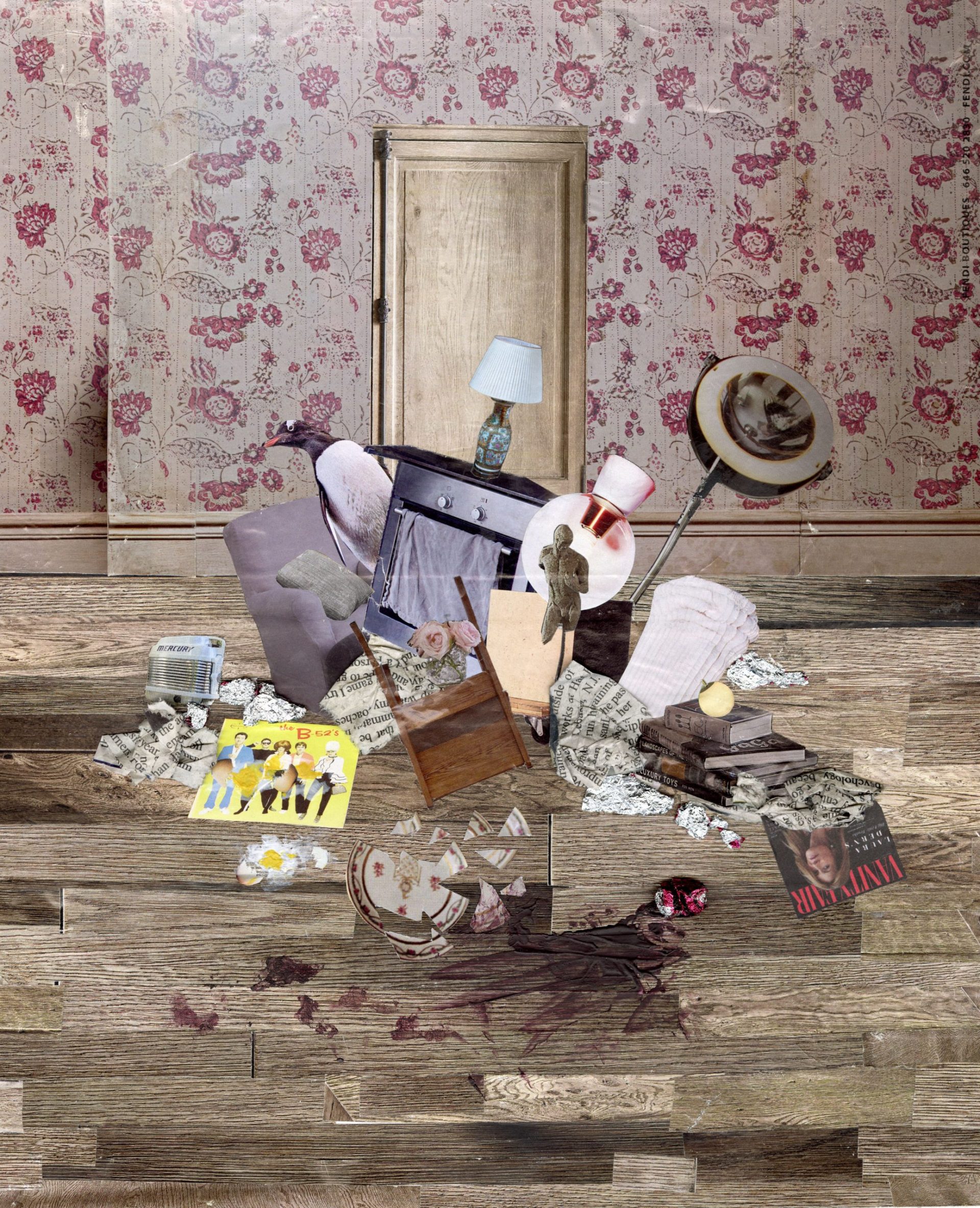That Which Comprises Everything
Jeffrey Haddorff, Martha Clippinger, Valerie Hegarty, and Leah Wolff at the Korn Gallery
By Kirstin Waldmann
Published: April 9, 2020
In an age consumed by mass production and mass consumption, it is not too outlandish to suggest that our modern civilization has long since grown weary with the concept of the ‘simple.’ The art world has followed suit, and though many contemporary artists utilize basic and traditional mediums in their craft, they are far removed from the creation techniques of their predecessors. The industrial, assembly-line reality of the 21st century is one that leaks into our art-making, and though majestic innovation is, it has estranged us from the intimate relationship artists once held with their materials.
Such is the resounding cry expelled from the latest exhibition in the Korn Gallery at Drew University, entitled the stuff the world is made of. The exhibition, featuring the work of artists Jeffrey Haddorff, Martha Clippinger, Valerie Hegarty, and Leah Wolff, is a visual-physical manifesto that compels the viewer to contemplate artistic creation with the most rudimentary materials, the most fundamental mediums that the earth could offer. The exhibition echoes the cry of acclaimed textile artist Anni Albers ー whose writings provide the show both its title and concept ーexpressing a desire to return to the most primordial forms of art-making. It aims to express this through the use of what is perhaps the most fundamental material of all: clay.

And express it does. The moment the viewer enters the gallery space, they are met with an environment a tad overwhelming to comprehend. Thick, dimpled, and glazed clay forms, particularly those of All My Favorite Singers Couldn’t Sing (2019) and Mountain Station (2019), rise from the floor almost like otherworldly fingers. It would not be difficult for one to envision the connection between artist and work in these forms, not only in their hand-manipulated appearance, but perhaps in the way they might resemble the hand that molded them. These are the creations of Jeffrey Haddorf. According to the artist himself, they represent the susceptibility of clay to touch, its compliance to be altered. Here we are presented with the notion that the “stuff” that composes the world is so limitlessly malleable, the antithesis of our modern industrial and unyielding forms.
Martha Clippinger, like Haddorf, employs abstract forms to convey clay’s connection with the artist, namely in its manipulation. Works such as tilt (2018) and trio (2018) bear the impression of the technique that birthed them ー a hand-hewn wooden tray ー while engaging this impression into conversation with delightfully vibrant colors and eccentric shapes. The wall-pieces assert the natural means of their creation, while simultaneously distracting that assertion with visual revelry, displaying a separate identity as a purely aesthetic object.
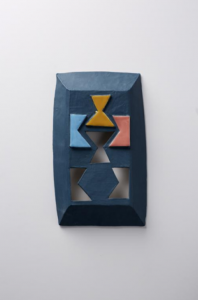
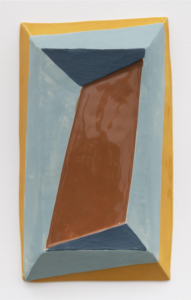
The difficulty experienced in interpreting Haddorf and Clippinger’s works, the meanings of which are not readily apparent, is perhaps what makes them so endearing and quintessential to the exhibit. For they require the audience to strip away a complex and crowded perspective inherent to this era, and look upon the art in its most raw form, just as Albers had instructed in her writings.
The show’s other two artists, Valerie Hegarty and Leah Wolff, also command a change of perspective in their contributions. Deviating slightly from their abstract-based colleagues, Hegarty and Wolff mingle with realistic representation, to demonstrate the crucial role of clay in the world and history’s attempts to acknowledge such. Whether molding the clay into roses or textiles that appear genuine enough to touch, these referring to Hegarty’s Broken Rosebush (2018) and Wolff’s New Key to Weaving (2014) respectively, the two women disguise the clay in an almost paradoxical manner. Their wall-pieces give the illusion of certain materials, while still remaining cognizant that they are indeed made of clay. Hegarty furthers this concept by fracturing the surfaces of her works, showing how they will break as clay does.
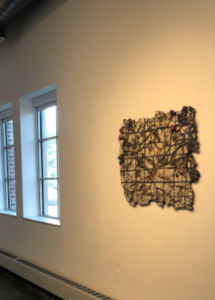
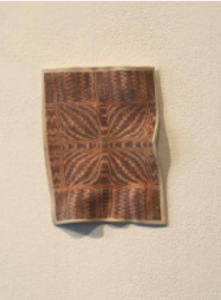
Curator Kimberly Rhodes’s care in selecting artists suited to the intentions of this exhibit is apparent. These artists are by no means strangers to the handling of clay ー even Clippinger, who is better known for her textile-based art. Well acquainted with the medium physically, these four artists have shown a deep understanding of clay at its most foundational level; as an entity that creates, grounds, and pretends, but ultimately makes up the world. One might find this exhibition particularly refreshing in the hectic present, as it grounds us in the most essential components of our environment. As Haddorf, Clippinger, Hegarty, and Wolff facilitate this journey to reclaim the traditional union between creator and creation, so vividly do they illustrate Albers’ adjuration: “We must find our way back to simplicity of conception in order to find ourselves.”
“the stuff the world is made of” continues through April 9th and concludes April 10th at the Korn Gallery, Drew University, 36 Madison Ave, Madison; (973) 408-3758, http://www.drew.edu/art-department/the-stuff-the-world-is-made-of/.
